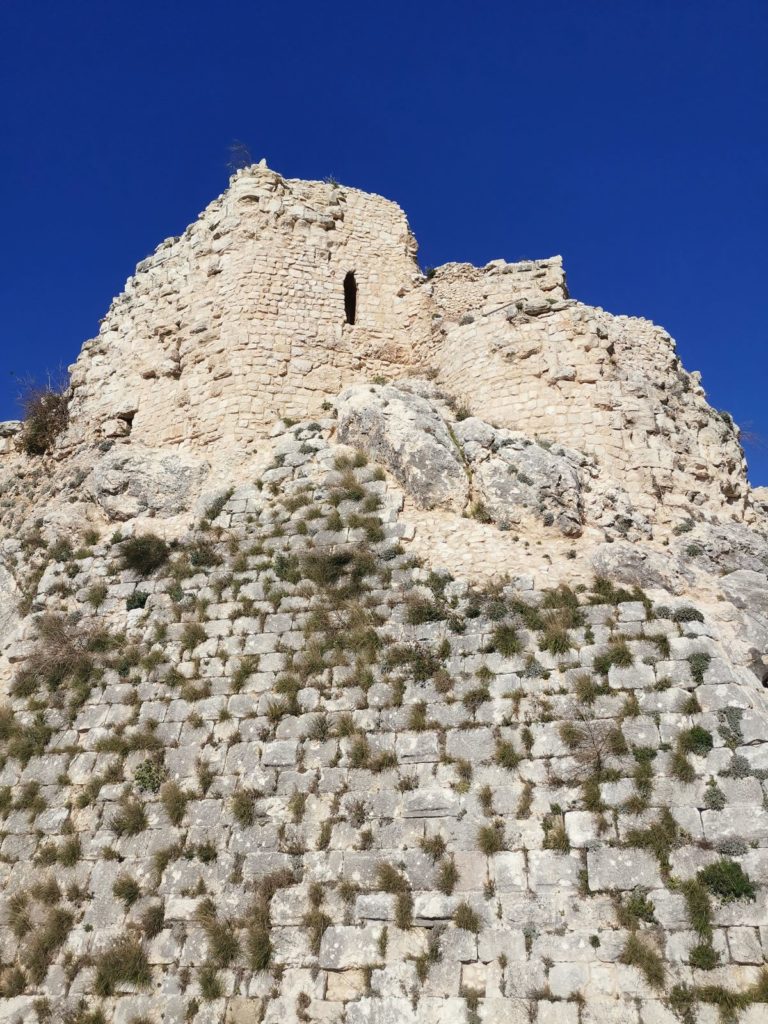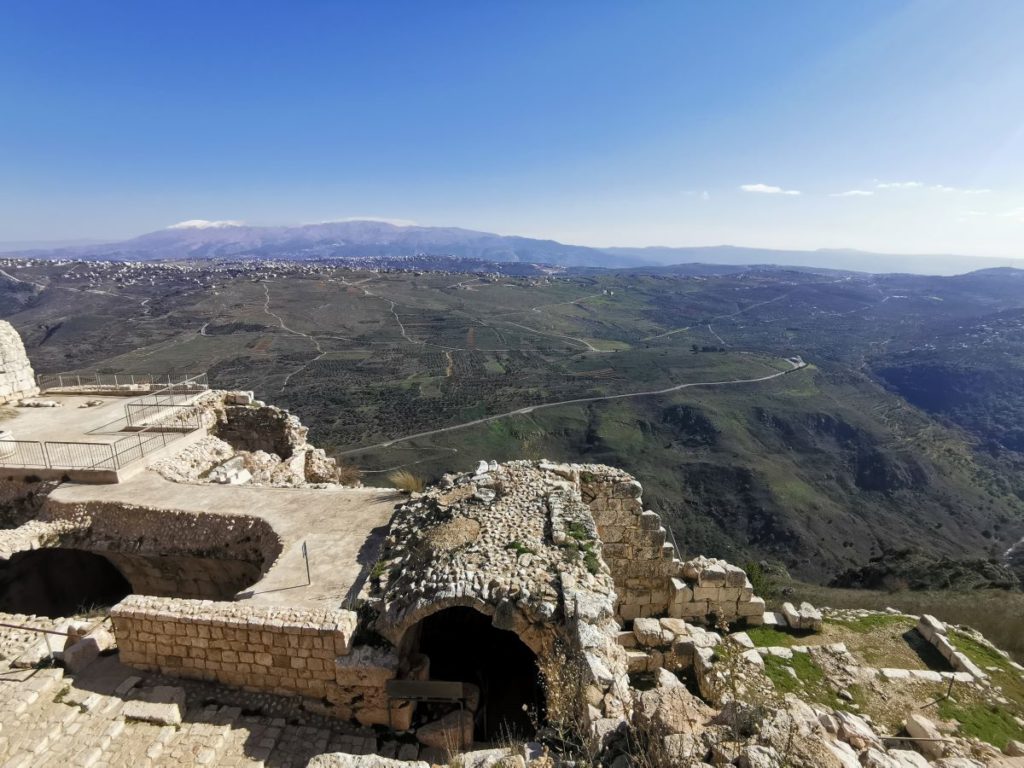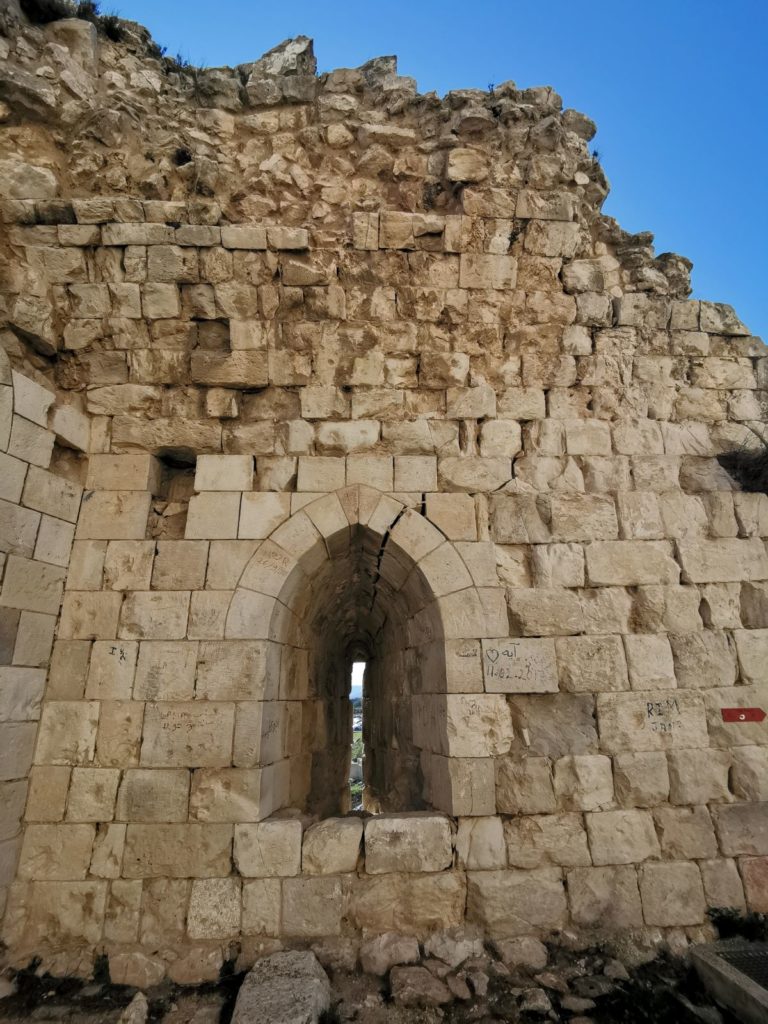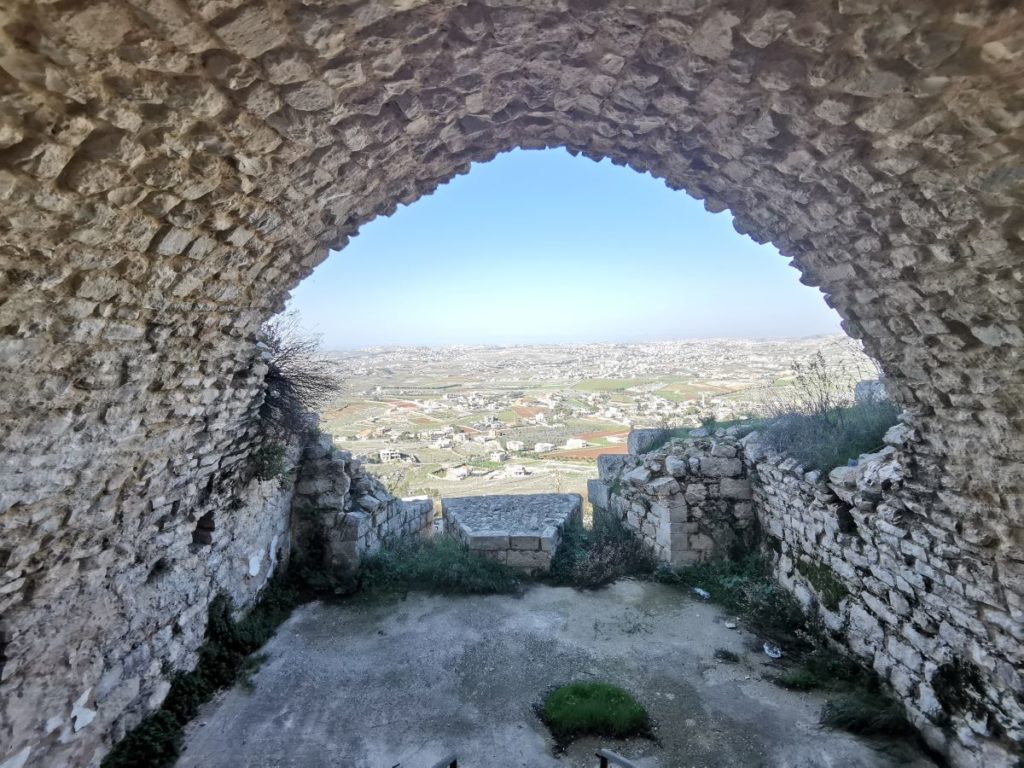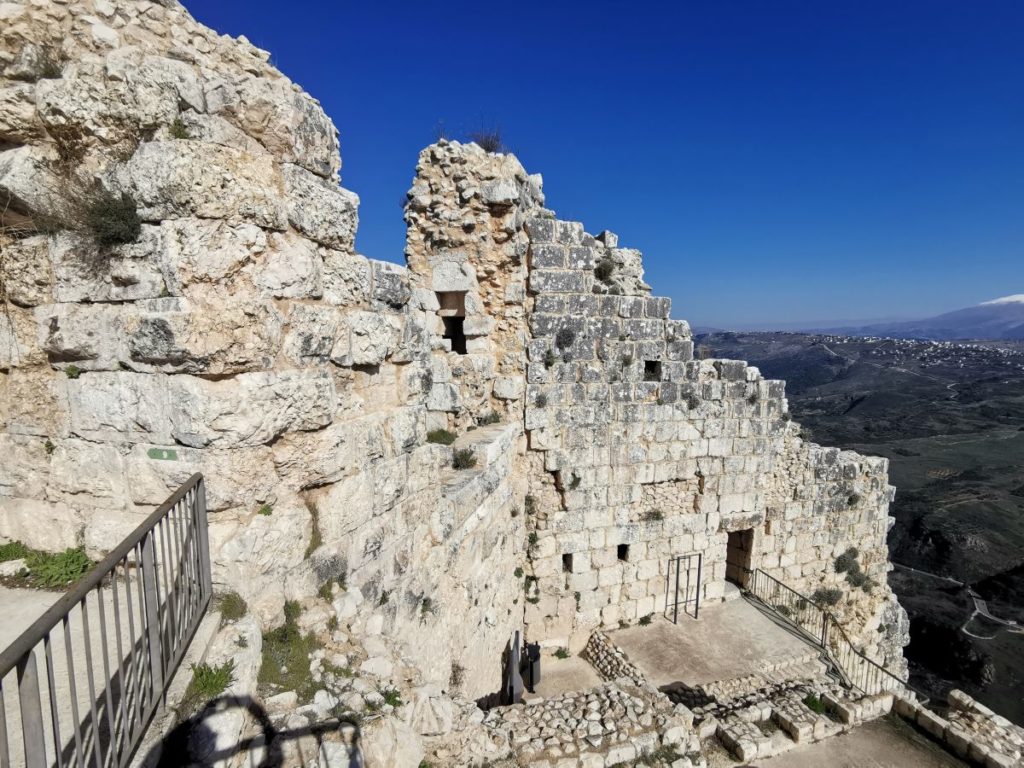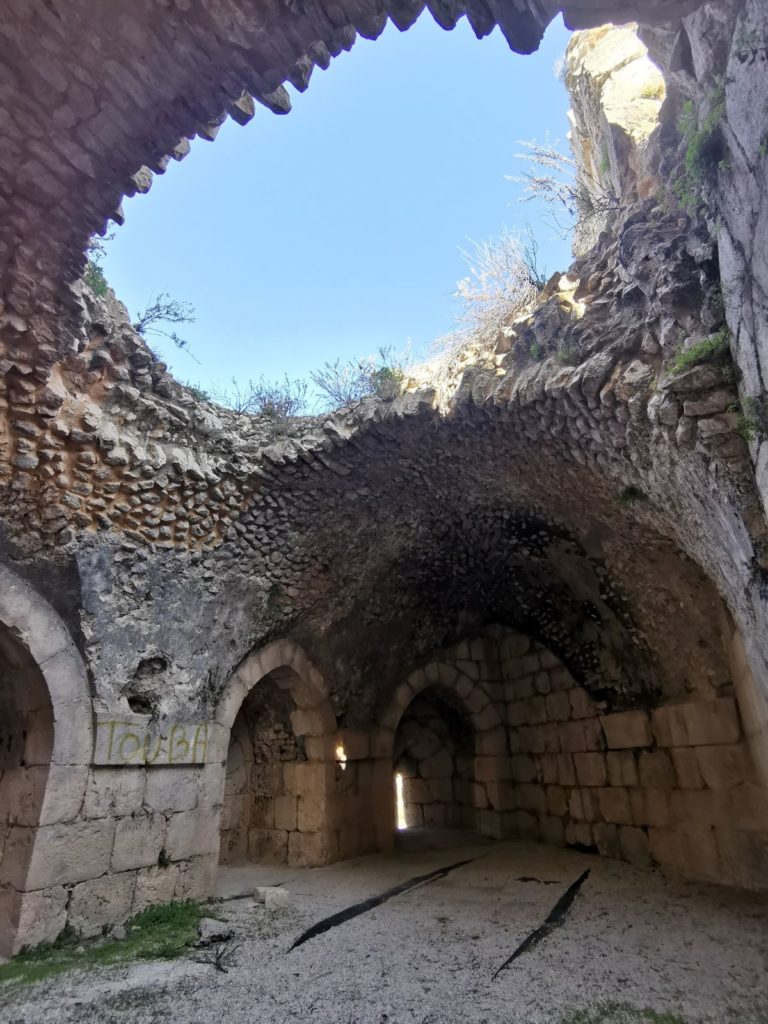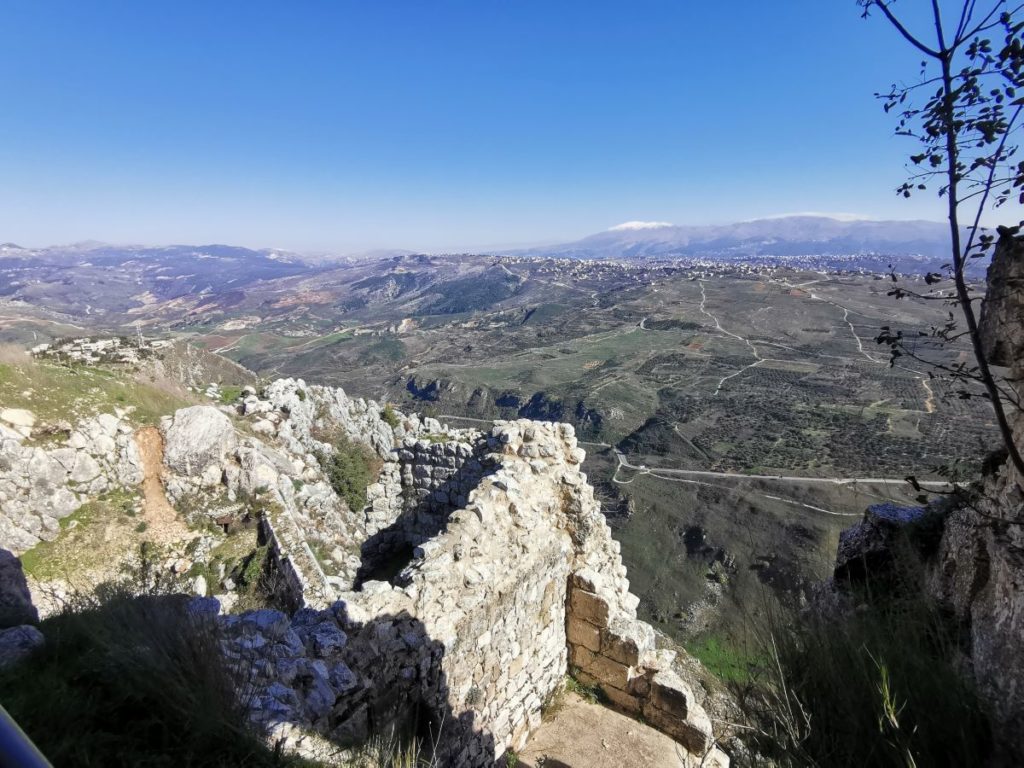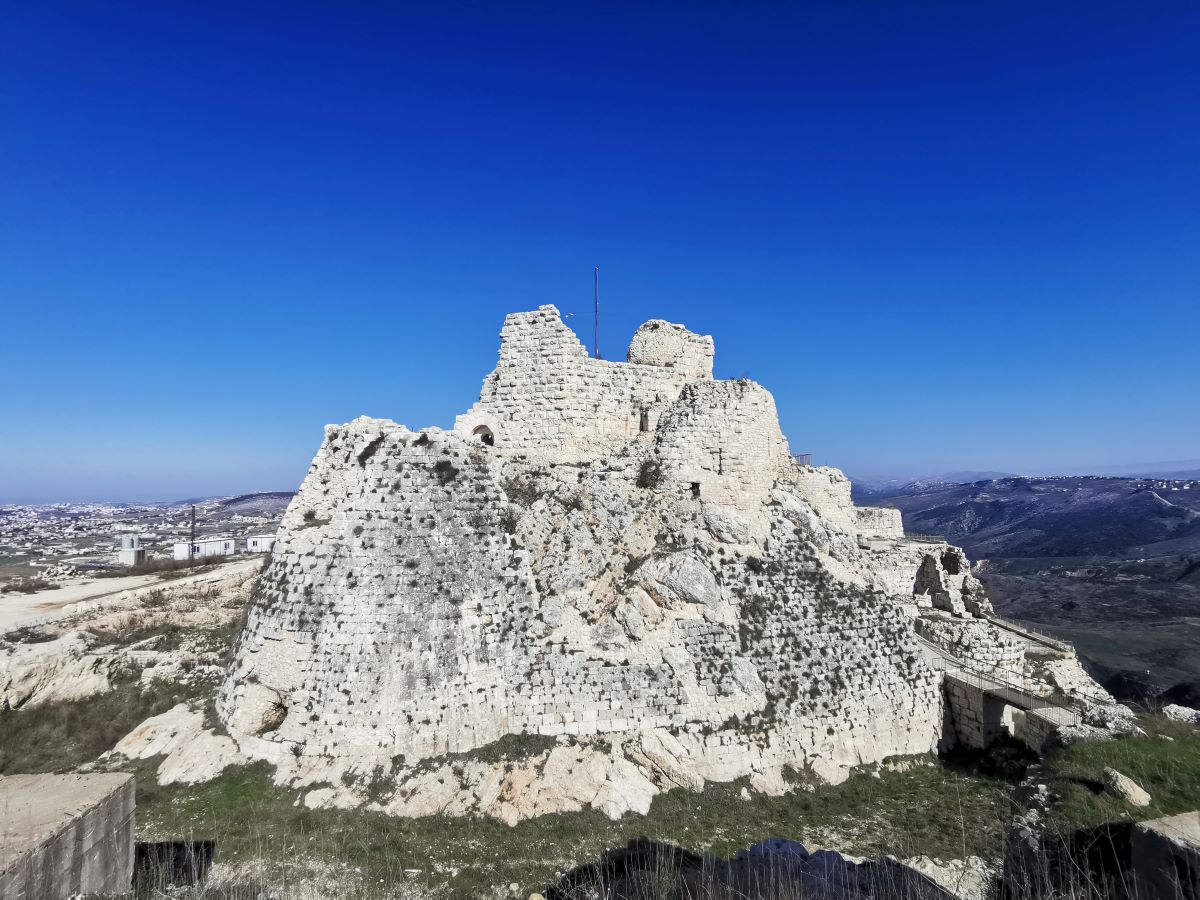Arnoun village features an awe-inspiring Medieval era fortress. It provides one of the few cases in which a medieval fortress proved of military value and utility in modern warfare as well, as its late 20th-century history shows.
Toponym
Beau Fort is a designation given by the franks that means “Beautiful Fortress”.
Qala’at El Shqif, is a designation that occurs in the Arab chronicles that means “Fortress/Castle of the High Rock”.
Timeline
1139 – Beaufort was constructed by the Crusaders when they received the location from the Aatabey of Damascus Chihab al-Din. Fulk, king of Jerusalem, granted the location to the lords of Sajette who undertook the works on site.
1189 – 1192 – the fortress was besieged by Salah El Din Al Ayyoubi who tricked Reynald, lord of Sajette to a peace talk outside the premises of Beaufort. Reynald was captured and tortured in front of his men at the walls of the fortress, and refused to order them to surrender to Salah El Din. Consequently, Reynald was imprisoned in Damascus. When, after two years of blockade, famine forced the defenders of Beaufort to capitulate, they stipulated two conditions before returning the castle: first that they would have their lives saved, then that Count Reynald and ten other knights would be set free.
1240 – Fearing the rise of his nephew Al-Sahil Ayyub in Egypt, the sultan of Damascus Saleh-Ismail gave the fortress to the Crusaders in exchange for their alliance against Al-Sahil Ayyub. This act did not please the Arab defenders of the fortress, saying that the sultan was failing in his duties as a faithful believer in handing over to the Christians an important place, and the conquest of which had cost so much blood and effort to the children of Islam.
Consequently, the fortress was besieged and bombarded by the sultan who eventually hanged most of therebels, banished many others and gave back the fortress to the Crusaders.
1260 – Julien, lord of Sajette, sold the fortress to the Templers who kept on strengthening its defenses.
1268 – The fortress was besieged and conquered by Mamluk Sultan Baibars on April 26. Safe conduct was granted and non-combatants were free to retire to Acre or Tyre.
1571 – The local family Saab took over the castle on behalf of the Ottomans and controled the surrouding areas.
17th century – Emir Fakhr El Dine took the fortress at the beginning of the 17rh century and put it in a state of defense following his revolt against the government of the Sublime Porte who sent troops against him.
1616 – The fortress fell to the Ottoman governor Ahmad Pacha Al-Hafez after bombarding it for 60 consecutive days.
17th – 18th century – By the end of the 17th and mid-18th centuries, feudal families restored and inhabited the fortress.
1782 – Al-Jazzar, governor of Akka set siege to the fortress and demolished its superstructures.
1837 – The fortress’ foundations were severely damaged following an earthquake that shook the region, which led to its abandonment.
1976 – The PLO and its local allies seized the castle in February. They used the fortress to concentrate their attacks against the Israeli army, thus making Beaufort a strategic and military resource of primary importance to achieve their goals. Consequently, Beaufort became the object of a written and pictorial production which quickly established it as an emblem of Palestinian combat and resistance (check the poster at the end of the article).
1980 – 19982 – Two battles between the PLO fighters and their allies against the Israeli army took place; both called “Battle of Shqif Castle”, it resulted eventually in the conquest of the fortress by the Israelis in June 1982.
2000 – The Israeli occupation of the site ended in May 25, 2000 following their withdrawal from South Lebanon. The Israelis destroyed their installations and military equipment, causing extensive damage to the fortress.
2002 – 2016 – Restoration works were executed at Beaufort, and a museum was erected at the entrance of the fortress that showcases all the historical events that happened on site.
Structure
Since its inception, the fortress saw several restoration works due to the damages that it incurred following the wars between the medieval eras and the 1980’s. Thus, the fortress carries Crusader, Ayyoubid, Mamluk, Ottoman and modern era sturctural elements.
Measuring around 150x100m, the fortress rests on a rocky ridge, bordered to the east by a steep precipice, more than 300m high, at the bottom of which flows the Nahar-el-Kasmyeh, the Leontes of the ancients.
Having an elongated triangle shape, it is defended by 8 towers. The fortress is divided into two parts: the lower one, towards the east at the edges of the escarpments of the Kasmyeh river and which was the main entrance to the fortress; the higher one is established at the summit of the crest of the rock.
The higher section housed the great hall of the fortress, as well as the dungeon, while the lower section housed vaulted galleries, storage rooms, dwellings, prisons, stables, etc.
Arrow slit windows can be seen all over the fortress’ walls, as well as stones with bossage.
Karim Sokhn
Tour Operator & Tour Guide
References
Baal, Vol 5, 2001
https://journals.openedition.org/emam/1810
http://www.orient-latin.com/fortresses/beaufort
https://www.lorientlejour.com/article/907954/le-chateau-de-beaufort-ressuscite-de-ses-ruines.html
Beaufort Castle, Lebanon; conservation versus restoration project J. Yasmine Lebanese University
Etude sur les monuments de l’architecture militaire des croisés en Syrie et dans l’île de Chypre, G. Rey, 1871
